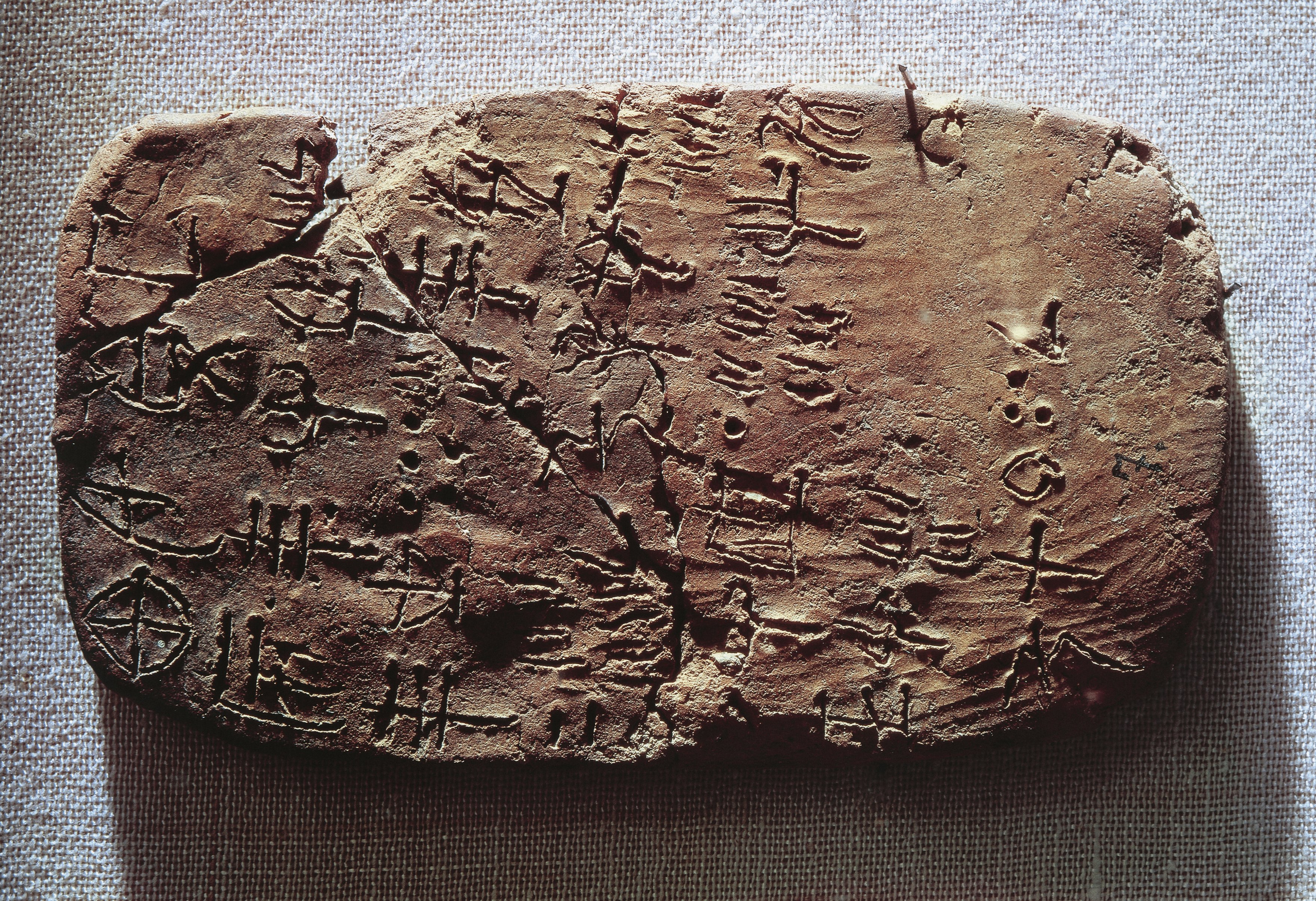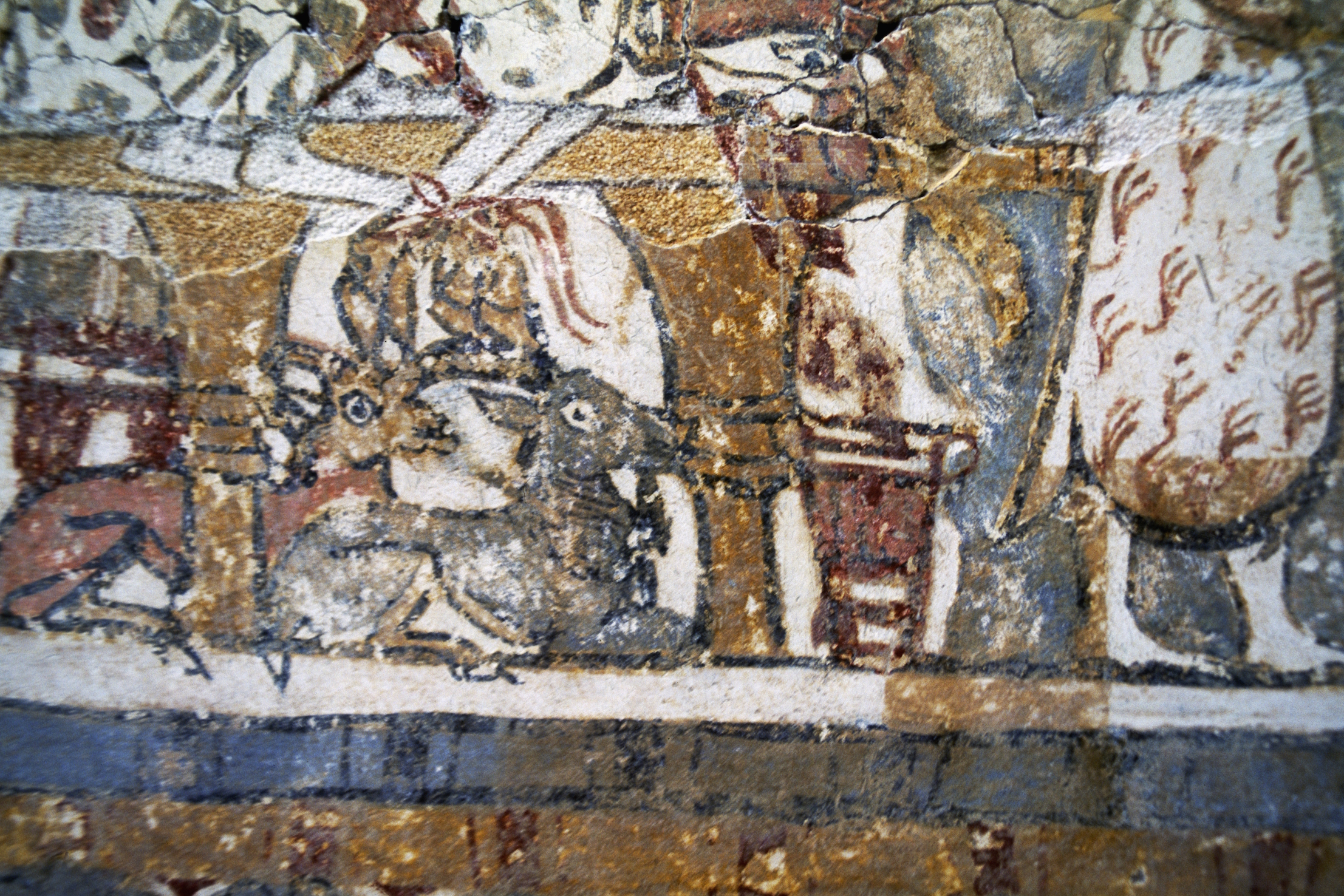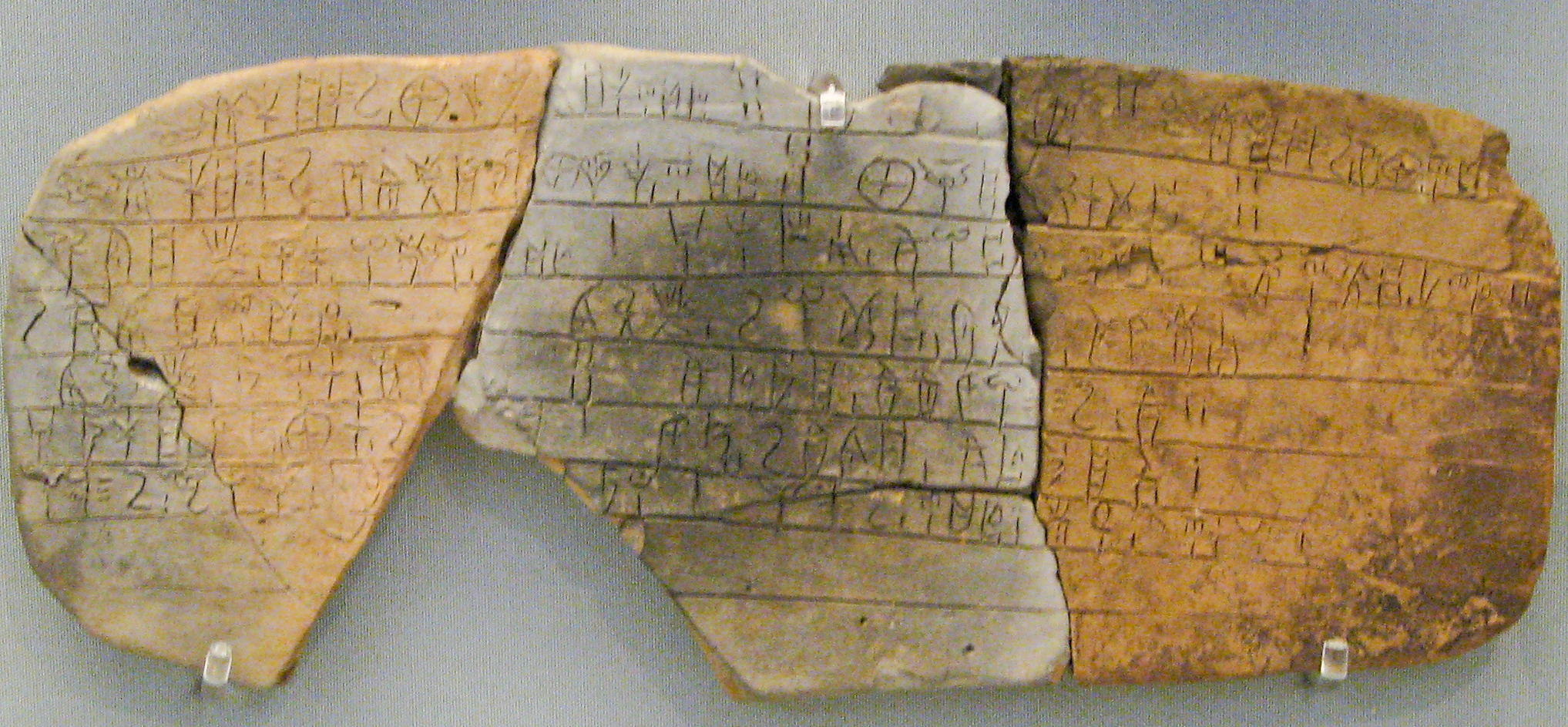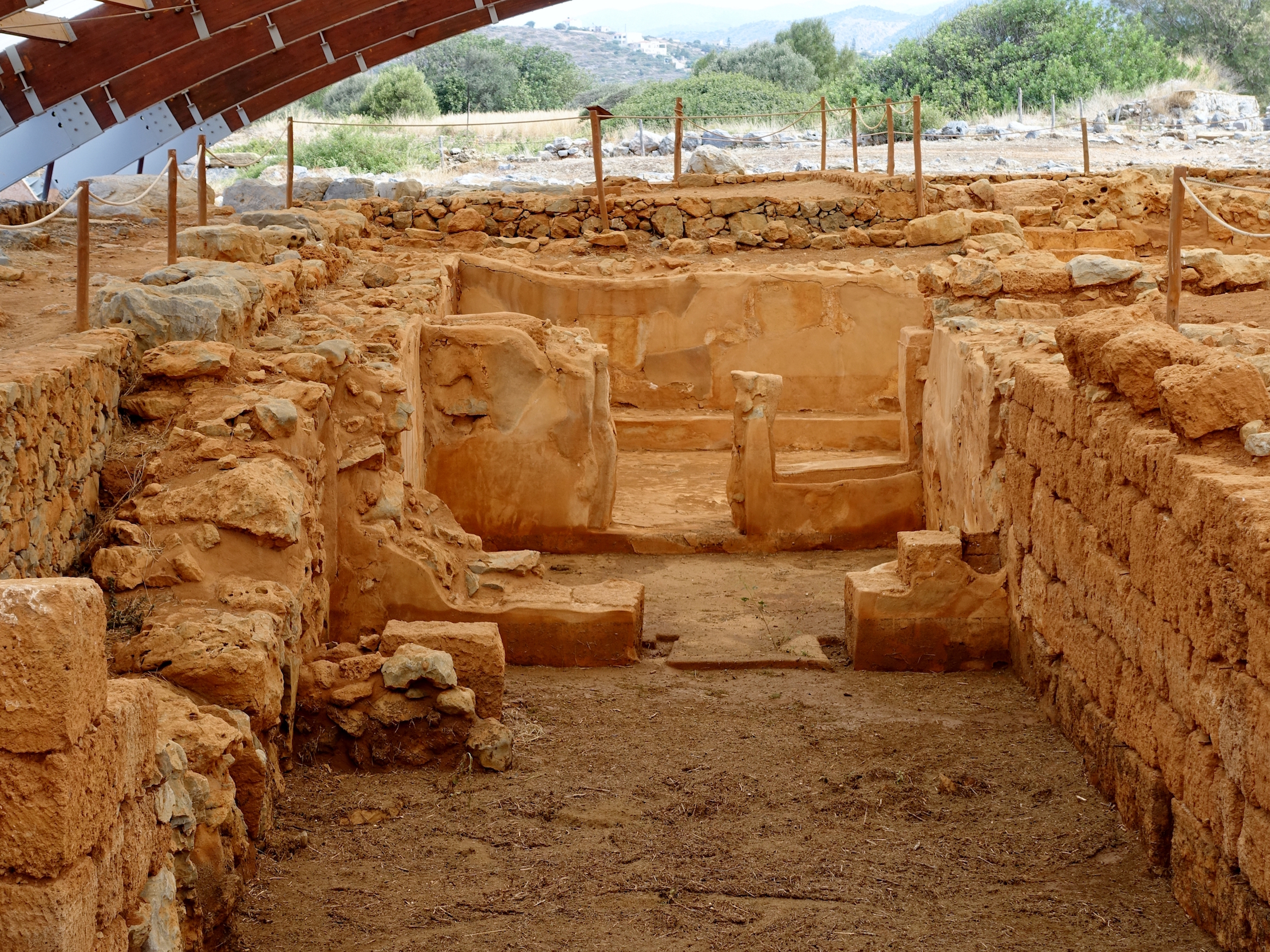
Arts & Culture
Lucky discoveries of lost ancient history

The decipherment of Linear B, the earliest form of Greek, was a history changing achievement, but decoding the older Linear A would open a new window on the origins of European culture
Published 5 November 2019
How do you go about deciphering the script of a wholly different language that was lost more than 3,000 years ago?
Linguist and archaeologist Dr Brent Davis says it’s like walking out on a tightrope anchored at just one end and supported by nothing but thin air, hoping you find something to stop you from falling.

“It’s extremely difficult. It really demands that you just take a leap of faith every time you venture out there.”
Dr Davis is talking about solving Linear A, the undeciphered language of the ancient Minoan civilisation of Crete that flourished around 1700 BCE to 1490 BCE.
The Minoans live on in popular culture as people of the land of King Minos who kept the half bull, half man Minotaur in a labyrinth below his palace at Knossos.
They are also possibly the oldest civilisation of Western Europe, and their language could reveal more about a people and culture that was the foundation on which Ancient Greek and (ultimately) Roman culture were built.

Arts & Culture
Lucky discoveries of lost ancient history
Dr Davis, a lecturer in Archaeology and Ancient Egyptian at the University of Melbourne, is one of only a handful of people around the world to have made any significant headway on solving Linear A in the last 50 years.
He established for the first time the word order of the language as being Verb-Subject-Object, like ancient Egyptian. So rather than ‘Minos has a minotaur’, a Minos would write ‘has Minos a minotaur’.
Linear B, a slightly later but closely related script found in Crete and mainland Greece, was famously cracked by the eccentric English architect Michael Ventris in 1952.
He discovered that Linear B was actually a very early form of ancient Greek – Mycenaean – and his finding extended the origin of ancient Greek civilisation back a further 500 years earlier than first thought.
The Linear B tablets were fortuitously preserved when the dried clay they had been written on was fired as a result of palaces and other buildings burning down during natural and man-made calamities.
The information they revealed proved to be largely inventories of people, produce, accounts, offerings, and other goods, giving us glimpses of people and their occupations.

Linear A is likely to reveal similar information, but tantalisingly Dr Davis says much Linear A occurs as religious script.
“If we can decipher these inscriptions, we will have the personal prayers of Minoan people,” he says.
At the time he cracked Linear B, Ventris told the BBC it was like having to solve a crossword puzzle without knowing which spaces are blacked-out.

Arts & Culture
Narcissus and the drawbacks of being a hot teenage boy
In fact, Ventris’ achievement was built on the crucial work of little-acknowledged US classicist Alice Kober, who died in 1950.
It was Kober who identified similar word endings in Linear B, allowing her to find some root words she thought were place names and which Ventris would later realise were akin to Greek.
She also devised a method for tabulating the relationships between signs that Ventris would build on – leaving behind more than 180,000 index cards.
Deciphering Linear B was a monumental achievement, but the challenge of Linear A is even more difficult. That is partly because the language behind the script doesn’t appear to be like any other language.
“It seems to be a wholly unknown indigenous language,” says Dr Davis.
“Linear B took most of its signs from Linear A, and because we can read Linear B, we can actually pronounce Linear A inscriptions, but if you do pronounce them, it just sounds like complete gobbledegook.”
Like Ventris, Dr Davis became fascinated with deciphering ancient languages as a boy, particularly the story of how Egyptian hieroglyphs were deciphered using the Rosetta Stone found by Napoleon’s soldiers in Egypt.
But he’s always known that solving Linear A was a tough ask.
“Ventris vowed, when he was just 14, that one day he’d solve Linear B. At the same age I was saying I’d love to solve Linear A, but I’m not promising anything,” laughs Dr Davis.
Indeed, after studying linguistics at Stanford, Dr Davis went into Information Technology (IT) instead, joining Apple in its early days and staying in the industry for 24 years, moving to Australia in the process.
“I really wasn’t meant to be in IT, I was meant to be a linguist and archaeologist. So, I went back to school.”
It was while he was doing his PhD at University of Melbourne that Dr Davis began to make real headway on solving Linear A.
By establishing the word order of the language, linguists can identify the function of a word in a sentence just from its position. It’s like finding a key word in a massive crossword puzzle.

“The definite word order in English is Subject (S)-Verb (V)-Object (O), as in the phrase John likes cats. And we know that about 97 per cent of human languages are either in this form or S-O-V (John cats likes) or V-S-O (Likes John cats).”
But when Dr Davis looked at other Bronze Age languages of this period in the region, none were like English.
They were either S-O-V (like early Greek and Sumerian), or V-S-O (like ancient Egyptian). He guessed Linear A was likely to have one of these two word orders.

Arts & Culture
What history can really teach us
He then applied this framework to a series of inscriptions that appear on Minoan offering bowls. To put it simply, he found that the words on the bowls tended to recur in what was obviously a formula, except for the second word in the inscription, which was always different from bowl to bowl.
His guess was that this word was probably the name of the person (the subject) making the offering. If correct then Linear A was likely a V-S-O language.
That was confirmed when he found the Linear B sign for ‘olives’ (which had been borrowed from Linear A), occurring after the name as the object of the phrase.
The repeated start of the phrase was therefore a verb, like “gives”, yielding the phrase gives Yasumatu olives, or in English Yasumatu gives olives.
Just such an offering of olives in a goblet has been found, preserved at the bottom of a sacred Minoan well.
“It was a huge feeling of discovery, completely thrilling,” says Dr Davis.

But he cautions that understanding the word order alone won’t be enough to solve Linear A.
“Examining the word order provides something of a magic key, but we if we are to crack it what we need most is simply more material,” he says.
Material was another advantage that Ventris had in deciphering Linear B.
There were 20,000 examples of Linear B signs occurring in inscriptions, compared to just 7,000 examples of Linear A signs.

Arts & Culture
Bringing ancient Rome to life
“That is about three-to-four A4 pages worth.”
“Mathematicians tells us that if we are to crack Linear A, we’ll need something like 10,000 to 12,000 examples of signs, which means we aren’t that far away, – but it all depends on archaeology.
“Discoveries are still being made, so I’m optimistic, but what we really need to find is a palace archive, which is where we are likely to find enough Linear A to finally decipher it.”
This an intellectual problem that still needs some serious dirt digging.
Dr Brent Davis is the 2019 winner of the Michael Ventris Award at the University of London, funded by the Michael Ventris Memorial Fund.
Banner: Reconstructed fresco at the Palace of Knossos, Crete. Picture: Getty Images